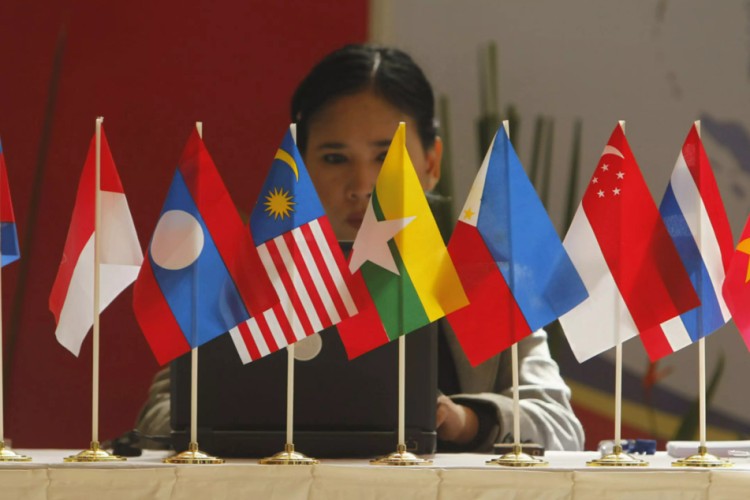India has entered a crucial phase of negotiations with the Association of Southeast Asian Nations (ASEAN) to update and modernise their existing trade agreement, which has been in place for over a decade. This renegotiation aims to address previous shortcomings that have negatively impacted India’s export earnings. The discussions are expected to focus on increasing flexibility in determining the origin of products through product-specific rules (PSRs), enhancing market access for Indian goods, reducing non-tariff barriers, and implementing value-addition requirements for incoming shipments.
The current agreement largely benefits ASEAN nations, creating an imbalance that has frustrated India due to a widening trade deficit. While exports from these nations have surged, imports into India from ASEAN countries have grown even more rapidly. This situation has led to a growing trade deficit with ASEAN nations. The ongoing review seeks to realign the trade balance by offering some concessions while safeguarding Indian industries.
READ | Bengaluru’s water crisis is a stark reminder of a looming global threat
One major concern for India is the potential misuse of the trade agreement to funnel goods from third countries into India, circumventing the intended benefits of the Free Trade Agreements (FTAs). Past incidents, such as a surge in imports from Singapore and Vietnam, raised suspicions of such practices. India has previously taken steps to address similar issues, such as restricting gold imports from Korea.
To counter the misuse of trade agreements and prevent the indirect import of goods from non-ASEAN countries, India emphasises the importance of strengthening verification mechanisms for the country of origin. This effort aims to ensure that the benefits of the Free Trade Agreement are utilised as intended, fostering genuine trade relationships and preventing the circumvention of trade norms. Enhanced verification processes would provide a robust framework to support fair trade practices and ensure that imports genuinely originate from ASEAN nations.
In fiscal year 2023, India’s exports to ASEAN increased to $44 billion, up from $42.32 billion the previous year. However, imports saw a sharper increase, jumping to $87.57 billion from $68 billion, resulting in a trade deficit of $43.57 billion, up from $25.76 billion the year before. Given the significant rise from a $5 billion deficit in 2011, the urgency for a review is clear.
India ASEAN FTA review
The review of the ASEAN-India FTA is not merely a trade negotiation but a strategic move towards reinforcing India’s economic ties with Southeast Asia. Strengthening these ties is crucial for India’s Act East policy, which seeks to promote economic cooperation, cultural ties, and strategic relationships with countries in the Asia-Pacific region. By modernising the FTA, India aims not only to rectify trade imbalances but also to secure its position as a central player in the regional economic architecture, enhancing its influence and connectivity in the Asia-Pacific.
Originally signed in 2009 and effective from 2010, the ASEAN-India Free Trade Agreement (FTA) aimed to create an economic powerhouse. However, the deal’s outdated nature necessitates a refresh. ASEAN comprises ten member countries, including Brunei Darussalam, Cambodia, Indonesia, Laos, Malaysia, Myanmar, the Philippines, Singapore, Thailand, and Vietnam.
India’s negotiation team is ready with a set of demands aimed at boosting exports and addressing the disproportionate benefits ASEAN countries have enjoyed. A key strategy involves incorporating product-specific rules (PSRs) into the existing rules of origin (ROO) framework to provide more flexibility for certain products and to prevent the rerouting of goods through ASEAN countries by third parties, like China.
The existing FTA requires a 35% value addition for goods, a threshold challenging for industries such as gems and jewellery. PSRs could offer relaxed rules for such industries, enabling them to take advantage of duty concessions and access ASEAN markets more effectively.
India is also addressing non-tariff measures (NTMs) that impede market access, such as specific food certification requirements. While aiming to eliminate these barriers, India is cautious about addressing new areas such as labour, environment, small and medium enterprises (SMEs), and gender issues in this round of negotiations.
Furthermore, India seeks tariff reductions on a variety of exports to ASEAN countries to enhance competitiveness. However, it faces the challenge of balancing its interests with the protection of domestic industries, especially as ASEAN countries push for more liberal PSRs and the removal of India’s 2020 customs rules, which they believe hinder their exports.
The high average tariffs in India, currently at 18%, contrast with the lower average tariffs in developed countries, creating a disadvantage for Indian products in its own market compared to ASEAN imports. This issue highlights the need for India to carefully negotiate to protect its interests and ensure a more balanced trade relationship with ASEAN nations.

